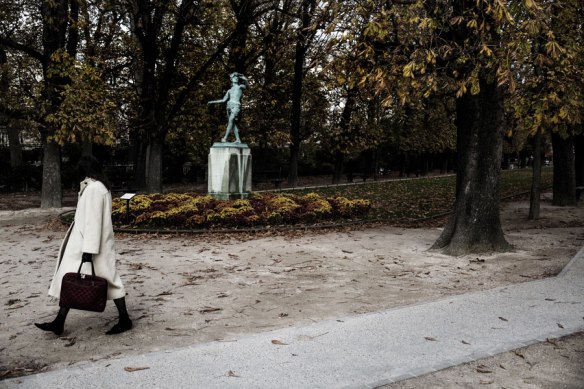27/03/18
On exploring street photography I came across two excellent generic books, ‘Street Photography Now’ by Hogarth and McLaren which concentrates on the history and the well-known photographers and ‘100 Great Street Photographs’ by Gibson which picks 100 images that he loves, occasionally by famous photographers, but often by those who are less so, and who may either be very early in their career, or who have not yet ‘made their name’. Interestingly, there were virtually no cross-over photographers between the two books and only one duplicate image! This is an unintentional comment on the variety and number of people out there that are considered as ‘street photographers’ by the photographic community and showed a wide range of styles. What all the photographers have in common is the enthusiasm to get out, walk around and take images that are mainly unplanned (although some do admit to staging some of their images). Some take images in colour, while others continue the black and white tradition that was started by Cartier-Bresson, while some use both. Most use a small relatively unobtrusive camera, but some will use medium or large format, and again, the use of flash is variable. It seems that anything goes. What is important is your interest in people, their lives and the ability to see the minutiae of everyday life. Many of the images are humorous, most comment in some way on life in the city or country. I particularly liked an image by Jeff Mermelstein of someone taking an iguana for a walk along a street in New York City and also the greens being dried on a fence in Hong Kong by Michael Wolf. Some photographers take most of their images where they live, for example Melanie Einzig in New York, others say that this does not give them any inspiration and travel widely.

© Michael Wolf
David Gibson defines street photography as ‘any photographs taken in a public space, with or without the inclusion of people, which are entirely natural, and not set up’ and ‘the best photographers have something in common, something vital: they have intelligence, depth and humanity’ (Gibson, 2017). I suspect the last word there is the important one.
Howarth and McLaren say ‘A great street photograph must elicit more than a quick glance as a moment of recognition from the viewer. A sense of mystery and intrigue should remain, and what is withheld is as important as what is revealed’ and ‘a good street photograph is remarkable because it makes something very ordinary seem extraordinary’ (Howarth and McLaren, 2011).
There is an argument about the ethics of street photography, should you ask for permission, should you strike up a dialogue, should you actually get model releases? Some of these questions depend on the law of the land. In France and Japan – you can take an image, but if you publish it and the person is recognisable they have the right to sue you. There is the ongoing dilemma about images of children. Unfortunately, this has meant that there is a lack of images in the public domain of childhood activities of the century – compare this with the images taken by Bert Hardy of children in the Gorbals in Glasgow taken in the 1940’s. How bold do you need to be to be a good street photographer, do you jump from the shadows and take a close-up image using flash such as Bruce Gilden, or do you hide your camera in your pocket? For most people the reality is somewhere between these two extremes.
Is surrealism still a major facet? Surreal is defined (according to Collins English dictionary) as
‘The elements in it are combined in a strange way that you would not normally expect, like in a dream.’ Surrealism was a 20th-century movement in art and literature whose main proponents (among many others) were Dalí, Picasso and Magritte who put together unusual combinations of objects to make images and stories that played on the unconscious mind. Many street images continue to be surreal, for example, an image by Loukas Vasilikos taken in 2014 which shows a woman walking alone in a park with no head (a trick, while a very effective one, of the light and the way a camera takes an image) but whether the photographer was planning to take an image that played to our unconscious mind is a different question. The surreal has probably swung more towards the use of irony (defined as a situation in which something which was intended to have a particular result has the opposite or a very different result) but both are still very much a presence, although often it is simply a gentle use of humour that makes the image. The impact is often reliant on careful observation skills, with objects lining up, oddities noticed and careful editing to choose the image where it all comes together.

© Loukas Vasilikos
Also see:
References
Gibson, D. (2017). 100 great street photographs. Munich: Prestel.
Howarth, S. and McLaren, S. (2011). Street photography now. London: Thames & Hudson.
